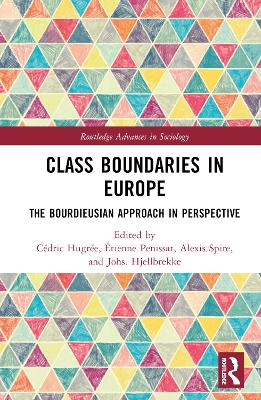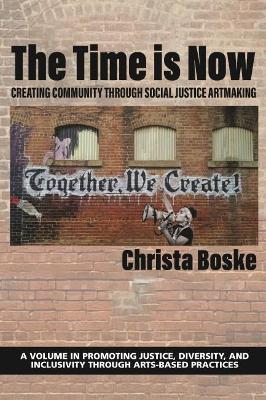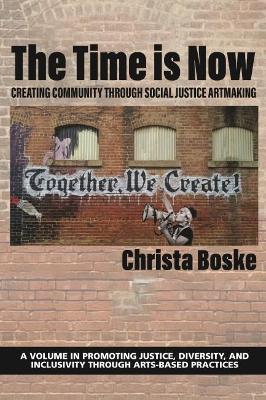Class Boundaries in Europe
 portes grátis
portes grátis
Class Boundaries in Europe
The Bourdieusian Approach in Perspective
Hugree, Cedric; Spire, Alexis; Penissat, Etienne; Hjellbrekke, Johs.
Taylor & Francis Ltd
11/2022
298
Dura
Inglês
9781032122670
15 a 20 dias
Descrição não disponível.
Introduction: Thinking about class boundaries in Europe
PART I: Social space and class polarisation
1 Stability, transformation, and escalation: Norwegian classes and class boundaries 2008-2020
2 Polarisation: Trends in class boundaries in Hungary
3 Social classes and their boundaries during Poland's "Golden Age"
PART II: Questioning the cultural reproduction of class boundaries
4 The cultivation of the synthetic gentleman: Exploring horizontal boundaries within the British elite
5 Exploring class differences within occupational categories: The case of professionals in Athens, 1991-2011
6 Class formation and social reproduction strategies in the Portuguese construction industry: Elements for a relational sociological analysis
PART III: Homology between class boundaries and political orientations
7 Class, confidence, and political conflicts in Denmark: Exploring social cleavages and political boundaries in a Nordic welfare society
8 The politicised class structure of German society (2009-2017)
PART IV: Blind spots in the Bourdieusian approach
9 France: The dynamics of internal changes within a persistent class structure
10 Class boundaries in Spain: Intergenerational and regional changes in the wake of the 2008 economic crisis
11 Inequality in the hidden abode of production: Class and working conditions in Sweden, 1995-2015
12 On the borders of class analysis: Questioning the demarcation of economic activity
PART V: Beyond nations? Social class and globalisation
13 Is happiness at work a class privilege? Subjective relationships to work and class boundaries in Europe
14 Elaborating class analysis on the European scale: The importance of British "non-domiciled" individuals
PART I: Social space and class polarisation
1 Stability, transformation, and escalation: Norwegian classes and class boundaries 2008-2020
2 Polarisation: Trends in class boundaries in Hungary
3 Social classes and their boundaries during Poland's "Golden Age"
PART II: Questioning the cultural reproduction of class boundaries
4 The cultivation of the synthetic gentleman: Exploring horizontal boundaries within the British elite
5 Exploring class differences within occupational categories: The case of professionals in Athens, 1991-2011
6 Class formation and social reproduction strategies in the Portuguese construction industry: Elements for a relational sociological analysis
PART III: Homology between class boundaries and political orientations
7 Class, confidence, and political conflicts in Denmark: Exploring social cleavages and political boundaries in a Nordic welfare society
8 The politicised class structure of German society (2009-2017)
PART IV: Blind spots in the Bourdieusian approach
9 France: The dynamics of internal changes within a persistent class structure
10 Class boundaries in Spain: Intergenerational and regional changes in the wake of the 2008 economic crisis
11 Inequality in the hidden abode of production: Class and working conditions in Sweden, 1995-2015
12 On the borders of class analysis: Questioning the demarcation of economic activity
PART V: Beyond nations? Social class and globalisation
13 Is happiness at work a class privilege? Subjective relationships to work and class boundaries in Europe
14 Elaborating class analysis on the European scale: The importance of British "non-domiciled" individuals
Este título pertence ao(s) assunto(s) indicados(s). Para ver outros títulos clique no assunto desejado.
social class;social inequality;Europe;elites;precarity;financial crisis;COVID-19;pandemic;Social Reproduction;Multiple Correspondence Analysis;Follow;Cultural Fractions;GBCS;Dominant Classes;Class Boundaries;European Working Conditions Surveys;ISCO;Geometric Data Analyses;Census;Capital Composition;Economic Fractions;West Germany;Bourdieusian Approach;Administrative Register Data;Cultural Class Analysis;Liberal Professionals;Post-socialist Transformation;Gini Coefficient;Economically Inactive;Wealth Inequality;Education System;Cultural Capital;Post-war
Introduction: Thinking about class boundaries in Europe
PART I: Social space and class polarisation
1 Stability, transformation, and escalation: Norwegian classes and class boundaries 2008-2020
2 Polarisation: Trends in class boundaries in Hungary
3 Social classes and their boundaries during Poland's "Golden Age"
PART II: Questioning the cultural reproduction of class boundaries
4 The cultivation of the synthetic gentleman: Exploring horizontal boundaries within the British elite
5 Exploring class differences within occupational categories: The case of professionals in Athens, 1991-2011
6 Class formation and social reproduction strategies in the Portuguese construction industry: Elements for a relational sociological analysis
PART III: Homology between class boundaries and political orientations
7 Class, confidence, and political conflicts in Denmark: Exploring social cleavages and political boundaries in a Nordic welfare society
8 The politicised class structure of German society (2009-2017)
PART IV: Blind spots in the Bourdieusian approach
9 France: The dynamics of internal changes within a persistent class structure
10 Class boundaries in Spain: Intergenerational and regional changes in the wake of the 2008 economic crisis
11 Inequality in the hidden abode of production: Class and working conditions in Sweden, 1995-2015
12 On the borders of class analysis: Questioning the demarcation of economic activity
PART V: Beyond nations? Social class and globalisation
13 Is happiness at work a class privilege? Subjective relationships to work and class boundaries in Europe
14 Elaborating class analysis on the European scale: The importance of British "non-domiciled" individuals
PART I: Social space and class polarisation
1 Stability, transformation, and escalation: Norwegian classes and class boundaries 2008-2020
2 Polarisation: Trends in class boundaries in Hungary
3 Social classes and their boundaries during Poland's "Golden Age"
PART II: Questioning the cultural reproduction of class boundaries
4 The cultivation of the synthetic gentleman: Exploring horizontal boundaries within the British elite
5 Exploring class differences within occupational categories: The case of professionals in Athens, 1991-2011
6 Class formation and social reproduction strategies in the Portuguese construction industry: Elements for a relational sociological analysis
PART III: Homology between class boundaries and political orientations
7 Class, confidence, and political conflicts in Denmark: Exploring social cleavages and political boundaries in a Nordic welfare society
8 The politicised class structure of German society (2009-2017)
PART IV: Blind spots in the Bourdieusian approach
9 France: The dynamics of internal changes within a persistent class structure
10 Class boundaries in Spain: Intergenerational and regional changes in the wake of the 2008 economic crisis
11 Inequality in the hidden abode of production: Class and working conditions in Sweden, 1995-2015
12 On the borders of class analysis: Questioning the demarcation of economic activity
PART V: Beyond nations? Social class and globalisation
13 Is happiness at work a class privilege? Subjective relationships to work and class boundaries in Europe
14 Elaborating class analysis on the European scale: The importance of British "non-domiciled" individuals
Este título pertence ao(s) assunto(s) indicados(s). Para ver outros títulos clique no assunto desejado.
social class;social inequality;Europe;elites;precarity;financial crisis;COVID-19;pandemic;Social Reproduction;Multiple Correspondence Analysis;Follow;Cultural Fractions;GBCS;Dominant Classes;Class Boundaries;European Working Conditions Surveys;ISCO;Geometric Data Analyses;Census;Capital Composition;Economic Fractions;West Germany;Bourdieusian Approach;Administrative Register Data;Cultural Class Analysis;Liberal Professionals;Post-socialist Transformation;Gini Coefficient;Economically Inactive;Wealth Inequality;Education System;Cultural Capital;Post-war







